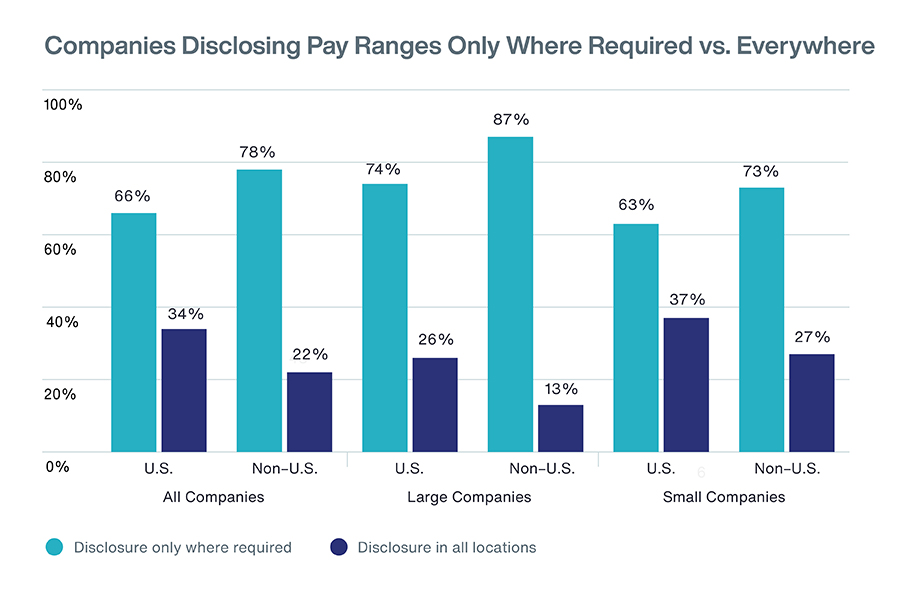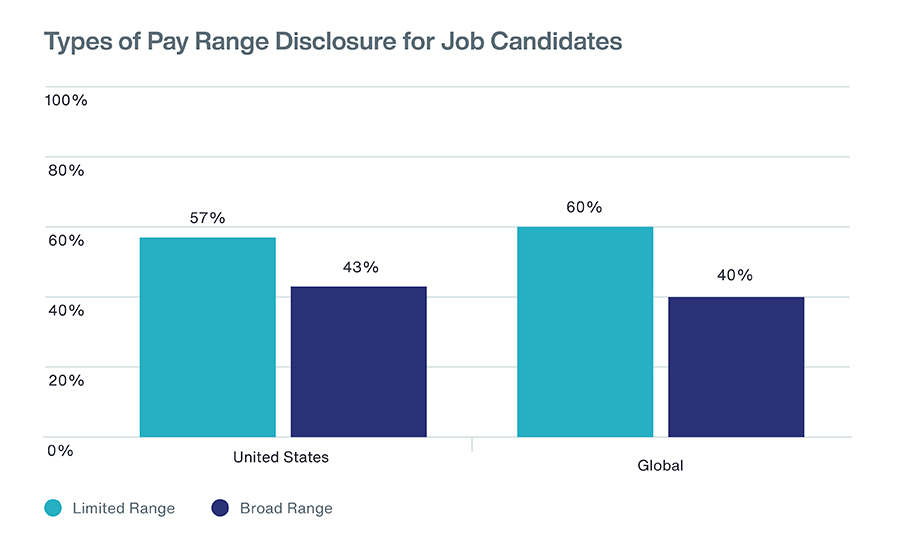Understanding How Salary Information Is Shared
In the U.S., the legal aspects of sharing pay information focuses primarily on job applicants. Pay range data informs candidates, thus providing a more level playing field for salary negotiation and the prevention of issues like pay compression. Internal communication about pay ranges is a natural offshoot of pay transparency laws. Indeed, efforts to improve pay equity often start with greater information sharing.
Limiting disclosures to only outside candidates could harm employee relations and negatively impact company culture. At the same time, a company needs to carefully consider the repercussions of sharing pay ranges with existing employees. This information could expose pay equity gaps or cause employees to wonder why they are paid differently (or perhaps not as high as expected based on tenure) than the pay range disclosed for open roles like theirs.
Sharing information with current employees is much less common than sharing hiring pay data with managers. Around 40 percent of U.S. respondents do not share any pay range data with employees. That figure rises to 55 percent outside the U.S. However, once some employees do access pay data, it’s likely that they will share this information with their colleagues. A survey from beqom in March 2023 found that rising inflation was driving more candid conversations among colleagues around income. In fact, sixty-three percent of UK workers and 58 percent of U.S. workers said they are more likely to discuss pay with their colleagues in the current inflationary environment.
























































































































































































